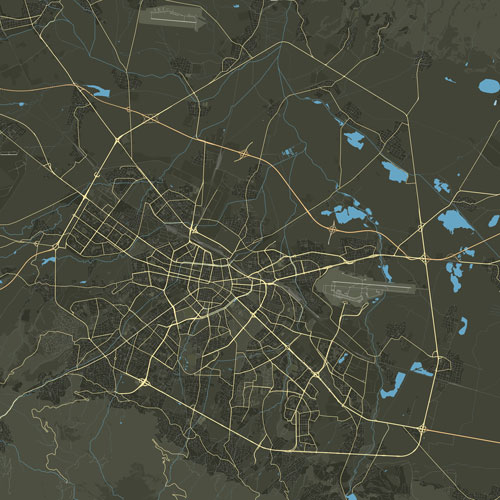Located in the southeastern part of the modern city of Varna, the Roman Baths are part of the historical core of the ancient city of Odessos. Their built-up area extends over 7,100 square meters and they represent the largest ancient public building in Bulgaria and the fourth largest thermal baths (baths) in the European provinces of the Roman Empire.
The ruins have attracted the attention of historians and archaeologists since the beginning of the twentieth century. In 1906, the Austrian scientist E. Kalinka defined the remains as an ancient building. The credit for awakening scientific interest in antiquity belongs to the Shkorpil brothers – pioneers of archaeological science in Bulgaria and founders of the Varna Museum. Karel Shkorpil was also the initiator of the first fortification works on the highest part of the wall rising above the terrain, called by the people of Varna the “Roman Tower”.
The archaeological investigations of the site by a team of the Varna Museum under the leadership of M. Mirchev in the period 1959-1971 and the excavations in the following years finally clarified the purpose of the building and its dating.
The architectural style – ” opus mixtum “, represented by alternating stone and brick belts, marks the beginning of the construction of the facility at the end of the II – beginning of and the 3rd century AD.
This dating is also confirmed by the discovered coins, the earliest of which were minted during the time of Emperor Septimius Severus (193 – 211), and the latest from Imp. Tacitus (275).
The thermal baths have a symmetrical plan and are from the so-called “small imperial type”. According to the studies, the height of the arched structures was over 20 m. All the main bathing and service rooms were revealed – two entrances, vestibules (vestibulum), dressing rooms (apoditerium), rooms for bathing with cool (frigidarium), warm (tepidarium) and hot ( caldarium) water, pools, palaestra, underground galleries, etc.
Of particular interest to this day is the heating system, the so-called hypocaust, connected to the double floor and the special cavities leading the warm air to the roof structure.
A large number of architectural details discovered (marble and granite columns, Roman Corinthian capitals, profiled cornices and pilasters), as well as statues of the Roman gods Heracles, Victoria, Mercury, Asclepius, Hygia, etc., testify to the magnificence and richness of the interior decoration.
In 1968, the “Roman Baths of Odessos” were declared an architectural and building monument of culture with the category of “national importance” (Government Gazette No. 16/1968).
Today, the Roman Baths are one of the main historical attractions in Varna, located in the central part of the city, at the corner of “San Stefano” and “Khan Krum” streets. Partially restored, preserved and exhibited over its entire area of 7,000 square meters, the thermal baths, together with the visitor center, are available for visits all year round.
Some of the most representative archaeological finds and architectural details from the site can be seen in the permanent exhibition of the Archaeological Museum – Varna.
Work time:
Winter: From October 1 to May 31 – from 10:00 a.m. to 5:00 p.m., with days off – Sunday and Monday;
Summer: From June 1 to September 30 – from 10:00 a.m. to 6:00 p.m., with no day off
Tickets:
Adults: BGN 5.00
Children: BGN 3.00
Entrance for students to the Archeology Department: BGN 5.00
Children up to 6 years: free
Days specified by Order of MK or Varna Municipality: free
Contacts:
tel. 052 600 059

